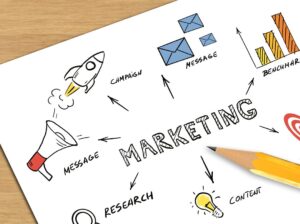When you first set off on your business journey, planning for your future technology needs is probably the furthest thing from your mind. However, as your business grows, navigating the ever-changing world of technology gets harder and harder and there comes a time when you need to consider some type of strategic guide. This what we call a technology roadmap, and its purpose is help you align your tech decisions with the long-term objectives of your business – hopefully leading to more growth and innovation.
The Importance of a Technology Roadmap
Without a clear roadmap, technology investments can become scattered and lose direction. One of the most important roles of a virtual CIO (vCIO) is to work closely with you and the leaders of your business to develop a plan that aligns with your vision, and that ensures that every technology decision you make will support the growth of your business.
Crafting the Roadmap
I use a typical 6-step approach when creating a technology roadmap for my clients:
- Understand Your Business Goals: Identify important long-term objectives and challenges so I can align future IT strategies effectively.
- Evaluate Current Technology: Assess existing tech assets, capabilities, and infrastructure to discover how they support the business today and identify areas for improvement or replacement.
- Forecast Future Needs: Create a future-state view of your technology environment, that aligns with your business goals and considers emerging technologies like AI, as well as any scalability needs.
- Complete A Gap Analysis: Work out where there are discrepancies between what you have today and what you need in the future.
- Build the Map: Develop a step-by-step plan (roadmap) that includes timelines, cost estimates and milestones needed to reach the future-state.
- Implement and Monitor: Execute the roadmap and continuously monitor progress, making any necessary adjustments to keep aligned with your business goals.
Why do you need a Technology Roadmap?
Strategic Alignment: Ensure that your technology initiatives support the overall business vision.
Cost-Efficiency: Planning helps you to budget and avoids the risk of unnecessary expenses.
Agility: With a clear plan, your business can adapt to technological changes quickly.
Risk Mitigation: Identify potential challenges in advance and lets you plan for them.
A technology roadmap is a vital tool for success in today’s tech-driven world. With the right support in place, your roadmap should become a dynamic document that guides every technological decision, giving you a robust and future-ready technology environment.






